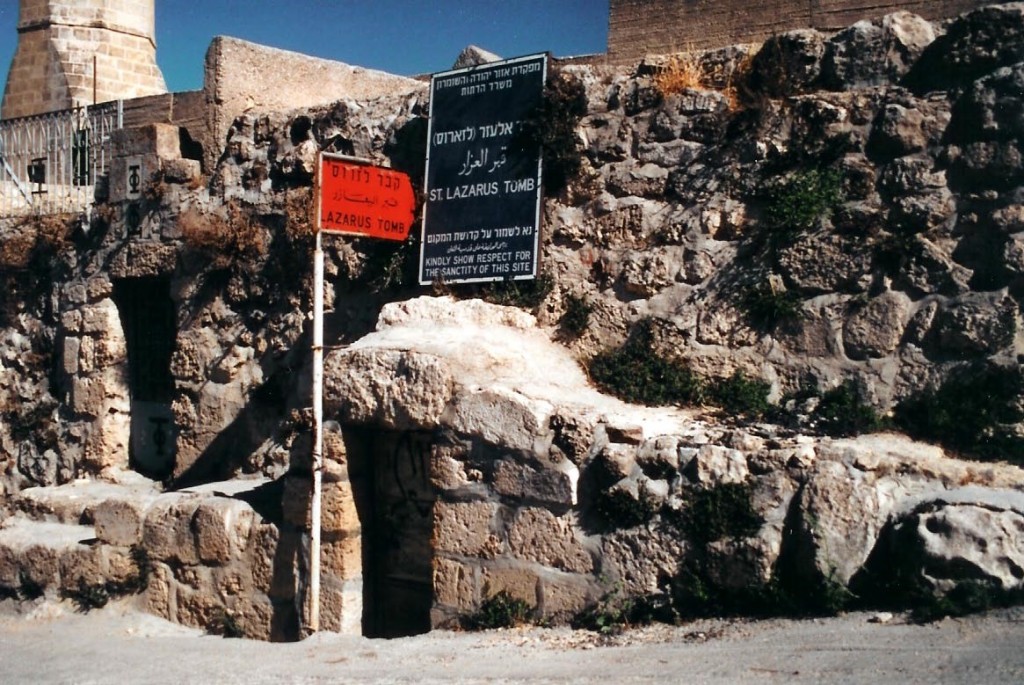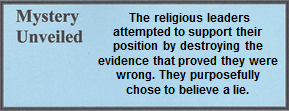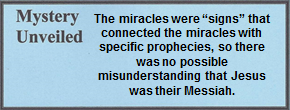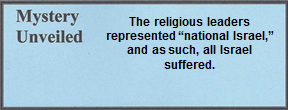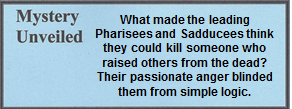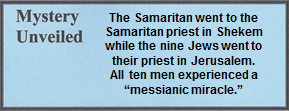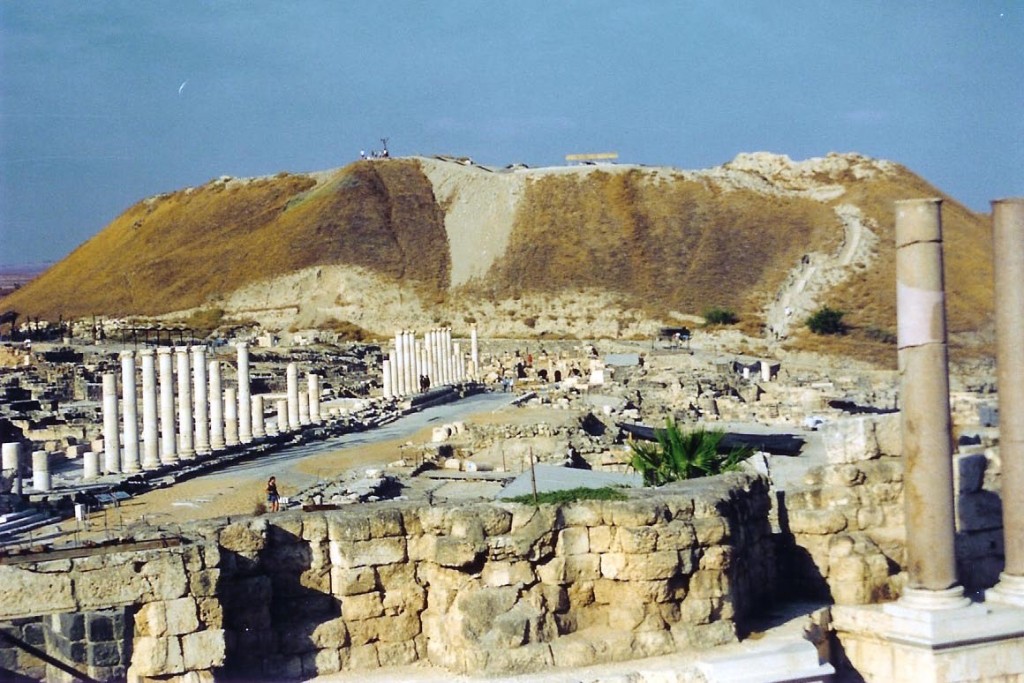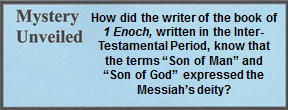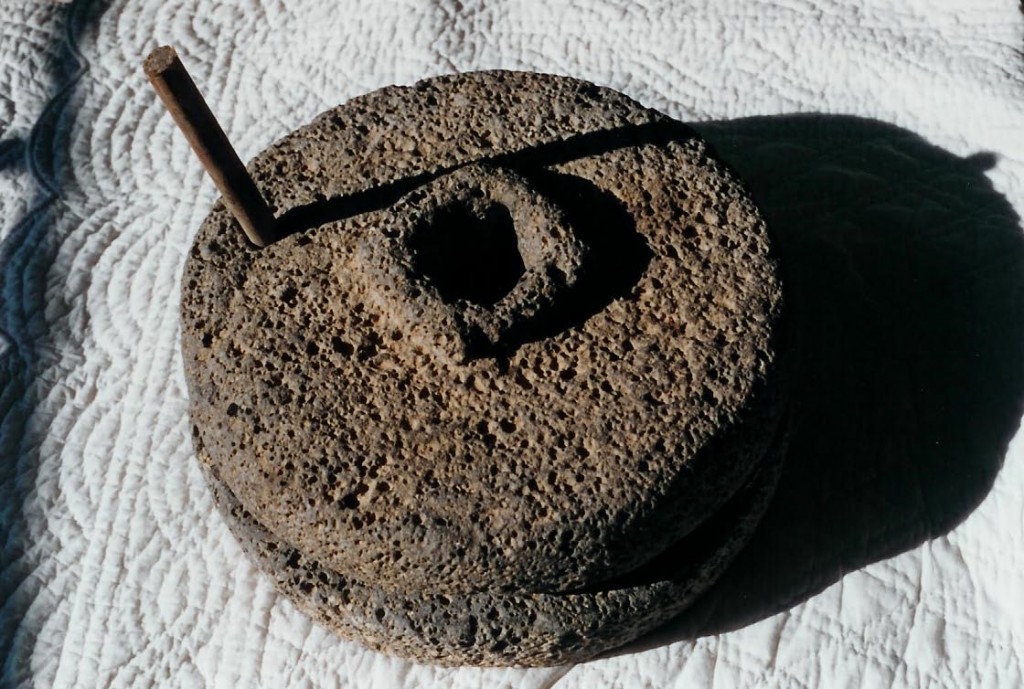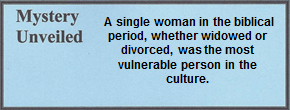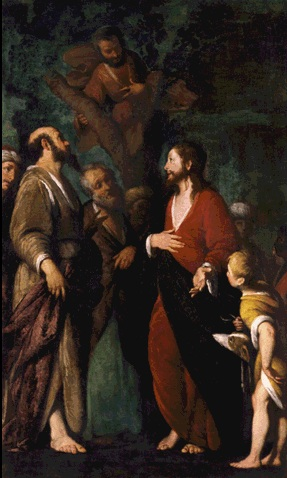12.04.02 Lk. 18:18-27; Mk. 10:18c (See also Mt. 19:16-30; Mk. 10:17-18b, 19-27)
THE RICH RULER; THE CAMEL AND THE EYE OF A NEEDLE
A Lk. 18 A ruler asked Him, “Good Teacher, what must I do to inherit eternal life?”
B 19 “Why do you call Me good?” Jesus answered. “No one is good – except God alone. 20 You know the commandments:
‘Do not commit adultery,
do not murder,
do not steal,
do not bear false witness;
Mk. 18c do not defraud
Lk. honor your father and mother’ (Ex. 20:12-16; Deut. 5:16-20).”
21 “I have kept all these from my youth,” he said.
C 22 When Jesus heard this, He told him,
“You still lack one thing:
Sell all that you have and
distribute it to the poor
and you will have treasure in heaven.
Then come, follow Me.”
D 23 After he heard this,
he became extremely sad,
because he was very rich.
E 24 Seeing that he became sad, Jesus said,
“How hard it is for those who have wealth
to enter the kingdom of God!
E’ 25 For it is easier for a camel
to go through the eye of a needle
than for a rich person
to enter the kingdom of God.”
D’ 26 Those who heard this asked,
“Then who can be saved?”
27 He replied, “What is impossible with men
is possible with God.”
C’ Peter said to him,
“We have left all
to follow you!”
B’ “I tell you the truth,”
Jesus said to them,
“no one, who has left
home
or wife
or brothers
or parents
or children
for the sake of the Kingdom of God,
A’ will fail to receive many times as much in this age and in the age to come, eternal life.”
Literary style.[1] Luke demonstrated, in typical Hebraic question and answer style, the matter of eternal life in lines A and A’. To acquire this eternal life one must enter the Kingdom of God in lines E and E’. In lines B and B’ are the old requirements versus the new requirements and in lines C and C’ are recorded the required obedience of the ruler versus the fulfilled requirements of Peter and the disciples. Finally, in line C is the obedience required of the ruler, but he feels it is too hard for him. In line C’ it is apparent that with God all things are possible, including obedience to His Word. In the poetic parable, Jesus compared the largest animal, a camel, which was in domestic use, with the smallest of holes to make the illustration that it is impossible to have eternal life without God.
In this encounter Jesus met a young man who, in today’s standards, might be considered to be the ideal disciple. He was religious, seriously observed all the biblical regulations of life, he was wealthy and evidently had a good mind for business and government administration, and his question suggests that he had heard Jesus several times previously. But Jesus identified his motives and knew that even though he loved God, his primary interest was wealth and not God. Therefore, when Jesus asked him to surrender his fortune to the poor (charity is one of the ideals of Judaism) he went away saddened. In fact, he is the only one in the gospels narratives who met Jesus and left discouraged.
“A ruler.” The identity of this ruler is not given, but when considering the common hatred everyone had for the Herodian dynasty, it is interesting that not a single negative word is mentioned about this ruler. Furthermore, he is one who observed all the Jewish laws, and in fact, he probably was Jewish. Mark said that he ran up to Jesus and knelt down (10:17). For a man of wealth, especially one in government, that was a very undignified way of addressing a common rabbi. Clearly he was at a point of desperation. Furthermore, since all Jews believed that they would all be saved, clearly he had heard several sermons by John the Baptist or Jesus previously that made him ask the question of eternal life.
One of the unique features of Inter-Testamental and first century Judaism was the love of discussion men had on theological issues. One of their favorite topics must have been, “What must I do to inherit eternal life?” This subject, on one form or another, appears in a number of Jewish writings as it was among the favorite subjects of debating rabbis.[2] Therefore, it is not surprising that this question was presented to Jesus – and probably many times. However, it is a flawed question – one cannot do anything to inherit eternal life. We have free will because God wants us to freely accept His invitation of love and to love Him in return. Furthermore, that love is demonsrated not so much by our lip service, but by our actions to Him and to others. So while the rich young ruler thought he observed all the commandments, he was weak on the first four (of the Ten Commandments). Evidently something in his spirit bothered him, because the subject had become personal to him.
“You know the commandments.” Every Jewish man knew the Ten Commandments. However, when Jesus referred to those commandments, he mentioned only a few of them. He did not need to mention all ten because that was understood. To mention a few of them was a Hebraic shorthand of referring to all of them – as was also done in James 2:10, Romans 13:9, and with the Noahide Commandments.[3] Furthermore, Jesus knew that this man knew the answer to his own question.
“Sell all that you have.” The wealthy man had faithfully kept all the laws in relationship to other people, but his security and trust were in his wealth, not in God. He was focused on materialism first and religion second – just enough to logically rationalize that God was pleased with him. Yet his heart was empty. The reason Jesus told him to give all that he owned to the poor was to separate him from his earthly security; to make him dependent upon Jesus and become a follower of Him.
This passage is often problematic in Western nations today where success is identified with materialism. The question is whether Jesus really intended to reduce this wealthy man, who was already obeying the Mosaic Law, down to poverty with this command. When Jesus spoke with Zacchaeus, the chief tax collector of Jericho, the social outcast said he would give half his wealth to the poor (Lk. 19:8). But Jesus did not require all his wealth to be given to the poor. Evidently Jesus was pleased with his response. Neither did Jesus tell him to seek another occupation. Jesus perceived the hearts of both men: With the ruler it was evident that the wealth owned him even though he obeyed all the laws, whereas Zacchaeus demonstrated that he owned wealth and was more than willing to share it with others. The first man had his faith (trust) in materialism and was not willing to give it up, whereas Zacchaeus had his total faith in Jesus. There is a significant difference.
“Distribute it to the poor.” This was the cultural symbol of righteousness.[4] It was believed one could not inherit eternal life unless there was a contribution to the less fortunate. This was always money above the tithe or support of the temple. It is amazing how close this came to being theologically correct. Jesus told the rich man to give to the poor because it was the godly thing to do and because he would then have to transfer his faith and security to Christ. But he refused.
Giving to the poor and other acts of charity is considered acts towards perfection and becoming “fully righteous.” However, by the time of Jesus the term “fully righteous” also included observing the entire Torah.[5] It always played an important function in Jewish piety – and was carried over into Christianity. Rabbi Hillel once said,
The more charity, the more peace.
Mishnah, Aboth 2.7
“Extremely sad.” This rich young ruler is the only person in the gospels who had a direct encounter with Jesus and left sad – he rejected the counsel of the One whom he will meet one day. In comparison to Zacchaeus, the tax collector at Jericho (Lk. 19:1-10; 12.04.06) the rich young man had good doctrine as reflected in his religious training and having been observant of all the biblical commands, yet he lacked love for those in need. Zacchaeus, on the other hand, had no doctrinal foundation in his life, but fell in love with Jesus and for those in need.
12.04.02.Q1 In Matthew 19:16-26 and parallels, could the gospel writers have meant “rope,” instead of “camel”?
Some critics have said that the phrase, “a camel,” is a misinterpretation. They claim the Greek word actually means rope, because the two Greek words for rope and camel are similar. They argue that a scribal error was made when copying Scriptures since the Greek word for camel kamelos,[6] is close to the word for a heavy rope kamilos that was used to pull ships.[7] This interpretation was so popular among some scholars, that in 1938 English Bible translation titled the Book of Books used the word rope instead of camel.[8] The purpose was obviously to soften the harshness of the saying. However, what these translators failed to recognize is that the same figure of speech is found in rabbinic writings, which indicates that the Scripture was transmitted accurately, without a scribal error.[9]
12.04.02.Q2 In reference to Luke 18:25, is “the eye of a needle” a small gate in the city wall?
This figure of speed, “the eye of a needle,” has often been problematic. Matthew used the Greek word rhaphis to mean an ordinary needle, but Luke, a physician, used the word belone, a medical term for a surgical needle and is found nowhere else in the New Testament.[10] The phrase obviously cannot be taken literally, but could this figure of speech be a reference to a very small gate in the city wall that was impassible for a large camel?
The Babylonian Talmud has a reference to the phrase, and from its context, it is clearly a figure of speech, similar to a hyperbole – an intentional exaggeration to underscore a point. It was also a point of humor. In the Talmud a certain Rabbi Naaman wrote that a man’s fanciful dreams are a reflection of his thoughts. He said that:
This is a proven by the fact that a man is never shown in a dream, a date palm of gold, or an elephant going through the eye of a needle.
Babylonian Talmud, Berakoth 55b
This saying was reflective of life in Babylon where elephants were more common than in Israel. Obviously the reality of having a date palm tree made of gold is as likely as an elephant going through the eye of the needle. Jesus used the same humor. Centuries later Muhammad made a similar comment which is found in the Qu’ran. It reads,
To those who reject our signs and treat them with arrogance, no opening will be there for the gates of heaven, nor will they enter the garden, until a camel can pass through the eye of a needle. Such is our reward for those in sin.
Qu’ran, Sura A’raf 7:40[11]
Another Jewish proverb reads as follows,
A needle’s eye is not too narrow for two friends, nor is the world wide enough for two enemies.
A Jewish Proverb[12]
Jesus essentially used a proverb that was centuries old and common in many cultures. The classical Periclesian Greek proverb says,
A camel can pass through an eye end of a needle for sewing easier than can a man of wealth who loves his wealth enter into the dwelling of the Gods.
Pericles in 485 B.C.
As to the meaning of the “eye of a needle,” there are two incorrect traditions and both refer to a small door through which someone could enter the city at night when the main gate was sealed. The two traditions are as follows:
- Beside main city gate there was a smaller gate in the wall.
- In the main city gate there was a much smaller door; a door within a door. (However, centuries later such combination of doors was developed.)[13]
The so-called lesson of the proverbial “eye of the needle” was that anyone with a large animal, such as a camel, would have to unload his beast of burden and the camel could barely squeeze through the gate to enter the city.[14] Any such claim is grossly false;[15] there is no archaeological or literary evidence of it.[16] Some have even said that the camel had to enter walking on its knees. There are four strong arguments against this fanciful interpretation.
- In all rabbinic writings, some of which are extremely detailed in the physical descriptions
of Jerusalem and the temple, there is not the slightest hint of such a gate. Jerusalem and the temple were deemed so incredibly beautiful and influential that there are no less than nine ancient sources which have preserved a description and none of them mentions the mythical gate as a night entrance.[17]
- No archaeological evidence of the biblical period has been found to support either the gate in the wall theory or the gate within the city gate theory,
- A camel cannot walk on its knees – no more than a horse or cow can walk on its knees.
- The myth may have had its origin in 1835 when a correspondent traveled to the Middle East and wrote to F. W. Farrar indicating that he had discovered such a gate. Farrar then proceeded to write of it in biblical journals.[18] Because he was a highly respected scholar and theologian, whose works are considered classics even today, his opinion on the eye of the needle was considered gospel truth. Hence, the myth was born. But if the unknown correspondent found it in the early 19th century, why cannot archaeologists do the same today? The answer is obviously a mythical mystery.
However, shortly after Farrar’s “research” became public, a longtime Middle East resident, G. N. Scherer, read the story and boldly stated that there was no such evidence whatsoever. Scherer stated the following: “There is not the slightest shred of evidence for this identification. This door has not been called the needle’s eye in any language and is not called so today.”[19] Scherer obviously was not familiar with the term in other writings, but he was quite knowledgeable of Jerusalem.
- Concerning a gate within the city gate, the city gate was the weakest point of any ancient city defense system. To have a door within a door would only have weakened it more. However, by the time the Ottoman Empire ruled Jerusalem (1517-1917), technology had advanced and small doors were placed within the city gates in a manner that the gates were not significantly weakened. The legend of the small gate of the first century is probably rooted in this development.
The conclusion of these two gate accounts is that the gate in the city wall is outright false and the night gate within the city gate is a legend rooted in a tradition that is barely a few centuries old. In light of that, the only explanation is one that has a trail of written history, and that is the phrase an “eye of the needle” is a figure of speech. Unfortunately, Farrar never realized that the camel and eye of a needle narrative is an exaggerated proverb denoting extreme difficulty; but note – it is a proverb; a figure of speech.
“A rich person.” The point of this poetic parable is not that the wealthy are automatically condemned to eternal punishment, but their sin is placing faith and security in material possessions. To the ancients, this phrase carried the cultural definition that wealth was obtained because of divine blessing. That belief posed a problem: “How could God punish someone to Hell, if He had blessed him financially?” Therefore, those who were wealthy were convinced they had free entrance into Heaven. The problem was not only that finances “owned” wealthy people, but those individuals believed in a theological constructed that made repentance challenging.
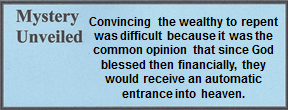
However, Jesus said that it is a sin for the wealth to own the believer. On the contrary, the believer is to own, enjoy, and share his material blessings to others. Giving to the poor has always been considered an act of righteousness not only in Judaism, but also in the primitive church. When Jesus told the ruler he needed to sell everything, that did not necessarily mean that the giver would become destitute and equally poor himself or even poorer than those he helped. Rather, it meant that he was to be free with his wealth and give to those in need. An example is found in the Dead Sea Scrolls, where members sold everything they owned to join the community. Archaeological discoveries indicate that the Essenes did not live in poverty, but rather enjoyed comfort in first century living standards even though they considered themselves individually poor. They had become known for their righteousness in helping the poor outside of their community, precisely what Jesus was teaching. A scroll reads as follows:
But we in the Community of Your Truth shall rejoice because of your mighty hand… Truly, your mighty hand is with the poor.
Dead Sea Scroll, War Scroll 1QM 13:12-14[20]
The account of the condemned wealthy man is not because he owned wealth, but because it owned him. Eternal life is only when faith is placed in Christ Jesus and not in any other form of security. What Jesus meant was that just as the camel cannot pass through the physical eye of a physical needle without the miraculous intervention by God, so a wealthy man cannot enter the Kingdom of God without the miraculous intervention by God. Wealth is a blessing to those who use it properly (see 1 Tim. 6:17-19).
“We have left all to follow you.” Really? Did Peter really leave everything behind to follow Jesus? The gospels are clear that he still possessed a house (Mk. 1:29) that was occupied by his mother-in-law and presumably by his four daughters, as well as a boat (Mk. 3:9; 4:1). Clearly his statement was not an absolute literal interpretation and Jesus never remarked about it. His statement was understood however, in the context that he renounced the comforts of a home and family along the Sea of Galilee as well as the security and financial rewards of a prosperous fishing business.
[1]. Bailey, Poet and Peasant. Part II, 158; Fleming, The Parables of Jesus. 25.
[2]. Ps. 37:9, 11, 18 refer to inheriting the land but also of an abiding heritage; Dan. 12:2; 1 QS 4.7; CD 3.20; 4Q181 1.4; 2 Macc. 7:9; 1 Enoch 37:4; 40:9; 58.3; Psalms of Solomon 3:12.
[3]. See Appendix 17.
[4]. For more information on the economy and social structure of the time, see. 02.03.03 “Economy.”
[5]. Jeremias, Jerusalem in the Time of Jesus. 127.
[6]. Barclay, “Matthew.” 2:217.
[7]. http://www.thefreedictionary.com/hawsers. Retrieved August 3, 2013.
[8]. Bruce, Answers to Questions. 55.
[9]. Grant, R. Early Christianity and Society. 97.
[10]. Vincent, Word Studies in the New Testament. 1:212, 1:407.
[11]. Muhammad founded Islam in the early 7th century A.D. and the Qu’ran (Koran) was compiled a century or two later. The more distant a literary work is from the time of its subject, the less reliable it is. Therefore, Islamic writings are not considered reliable “primary witnesses.” Nonetheless, this quotation is included for the benefit of Muslim readers.
[12]. Quoted by Vincent, Word Studies in the New Testament. 1:109.
[13]. An example of such a double door can be seen in the Nazareth Village in Israel. This door is of the early Ottoman Empire Period and is typical of medieval European fortress doors.
[14]. Thompson, “Camel.” 1:491-92.
[15]. Fruchtenbaum, The Jewish Foundation of the Life of Messiah: Instructor’s Manual. Class 19, page 6.
[16]. Vine, “Needle.” Vine’s Complete Expository Dictionary. 2:429; Ryken, Wilhoit, and Longman, eds., “Eye of the Needle.” Dictionary of Biblical Imagery. 256.
[17]. Descriptions of Jerusalem and the Temple are found in a number of ancient sources, including Josephus, Wars. 5.5.1-8; Antiquities. 15.11.1-7; Jewish writings in the Mishnah, Middath 1-4; Strabo, Geography 7.281; 16.28-40 (cf. 16.2.34); Tacitus, History. 4.4; Dio Casius History of Rome. 37.5-17; 49.22; 66.4-12; Pliny the Elder, Natural History. 5.14; Polybius, The Histories of Polybius. 16.4; and the Temple Scroll which is a part of the collection known as the Dead Sea Scrolls.
[18]. Farrar, “Brief Notes on Passages.” 375-76.
[19]. Scherer, The Eastern Colour of the Bible. 37; Bailey, Poet and Peasant. Part II, 166.
[20]. Cited by Hansen, “The Rich Young Ruler and the Wandering Rabbi.” 13-14.
